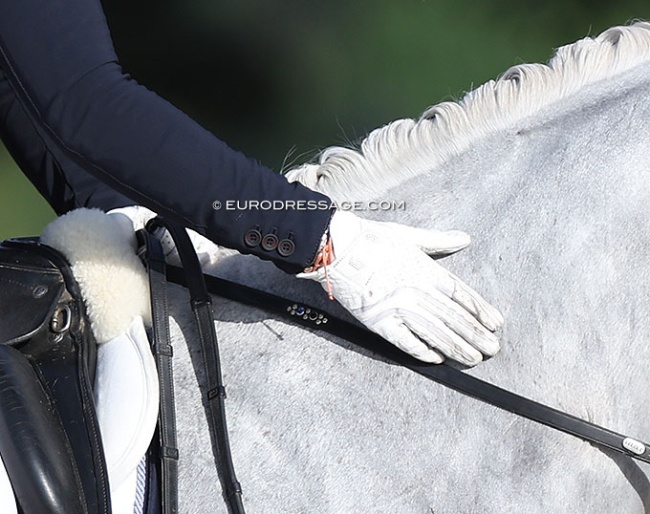
A new study in Sweden and Norway has investigated the prevalence of sexual harassment and assault in the equestrian sector. The results confirm problems previously raised within equestrian sports, and further highlight underlying power structures.
The horse sector includes, for example, equestrian sports, horse racing (harness and gallop), and Icelandic horse sports.
"We say that equestrian sports shape leaders. Then we must also shape a culture where leaders cannot use their power to exploit young people. Clearly highlighting and working against all forms of harassment and abuse is vital in the sport we love," said Catrine Hermansen, who is responsible for safety issues at the Swedish Equestrian Federation.
The Horse as a Means of Power
Vulnerability can occur in all sports and everywhere in society, but what distinguishes equestrian sports from other arenas is above all the horse, which can be used as a means of power by perpetrators.
"Access to the horse can bring power, authority and control to certain people. Where others can become subordinate, dependent and vulnerable. Circumstances that make exploitation, harassment and abuse possible, and equestrian sport a risk environment," says Susanne Johansson.
Susanne is a lecturer at the School of Gymnastics and Sports, GIH, and project manager for the study “Safe sports environments in the horse sector” which was carried out by GIH and the Norwegian Institute of Sport during 2024-2025. Susanne Johansson was previously also a member of the Equestrian Sports Safety CouncilLink to another website..
Safe Leaders
The Swedish Equestrian Federation has been working actively and systematically for many years for safe equestrian sport and to break the culture of silence. The Safe Leaders initiative has ensured that safety issues are now a given in almost all of our training courses. The safety of young people is the responsibility of adults, it is important to get more people to hear what is not said, and to act if something happens.
"What the research shows is deeply serious and a central part of our security work as it shines a bright light on dark issues. These are issues that we take very seriously. We ourselves have been part of the study and have also distributed the survey widely in equestrian sports via social channels and in connection with meetings with young people and leaders, precisely because we want these voices to be heard," says Catrine Hermansen.
The study is based on 653 survey responses from people who are or have been active in the Swedish and Norwegian horse sector. The people were not selected randomly but chose to participate in the study themselves. In addition, in-depth interviews about experiences of sexual harassment and abuse were conducted with 21 people.
Courage, Responsibility, Action
Now it's about courage, responsibility and action
"Although the selection in this study cannot be generalised to everyone in the horse sector, as it was not random, thanks to the large proportion who have stated that they have been exposed, we can examine what characterizes these situations and the groups and risk factors involved," explains Susanne Johansson.
Over half of the study participants state that they have at some point been subjected to sexual harassment and abuse in horse-related environments. This can involve offensive sexual comments, inappropriate looks, but also being touched unwelcomely or being forced to touch someone else sexually.
"It is completely unacceptable that this happens and it must be brought to the surface. It is about people's lives and all adults must dare to see reality. Now it is about courage, responsibility and action," says Catrine Hermansen.
The study also shows that few of those who have been subjected to harassment or abuse report the incident to the police or to other reporting functions within, for example, equestrian sports and sports. It is rather friends who find out first.
"The important role of friends is also something that has emerged in our meetings with thousands of young people and leaders in equestrian sports. That is why we are pleased to now be able to further join forces for safer equestrian sports through the major initiative VÄNtilera together with ChildX . VÄNtilera gives us great resources, expertise and tools to strengthen and support friends of young people who have been subjected to sexual abuse, or who have themselves subjected others. We must move from a culture of silence to a culture of conversation, where no one is left alone," says Catrine Hermansen.
Related Links
Safe Sport: What’s New to Know - Panel Discussion at 2020 USEF Annual Meeting
Protecting Young Victims from Sexual Abuse and Safe Sport Authorization Act of 2017 Signed Into Law
Belarusian Dressage Rider Olga Safranova Seeks Asylum in Poland
Equestrian Australia Takes Lead in Adopting National Integrity Framework
Horse Community Members Speak Out on American Riots, Black Lives Matter and White Privilege In the Horse World
The 2024 World Cup Finals Riyadh: on Human Rights, Sportwashing, and a Minor Media Boycott